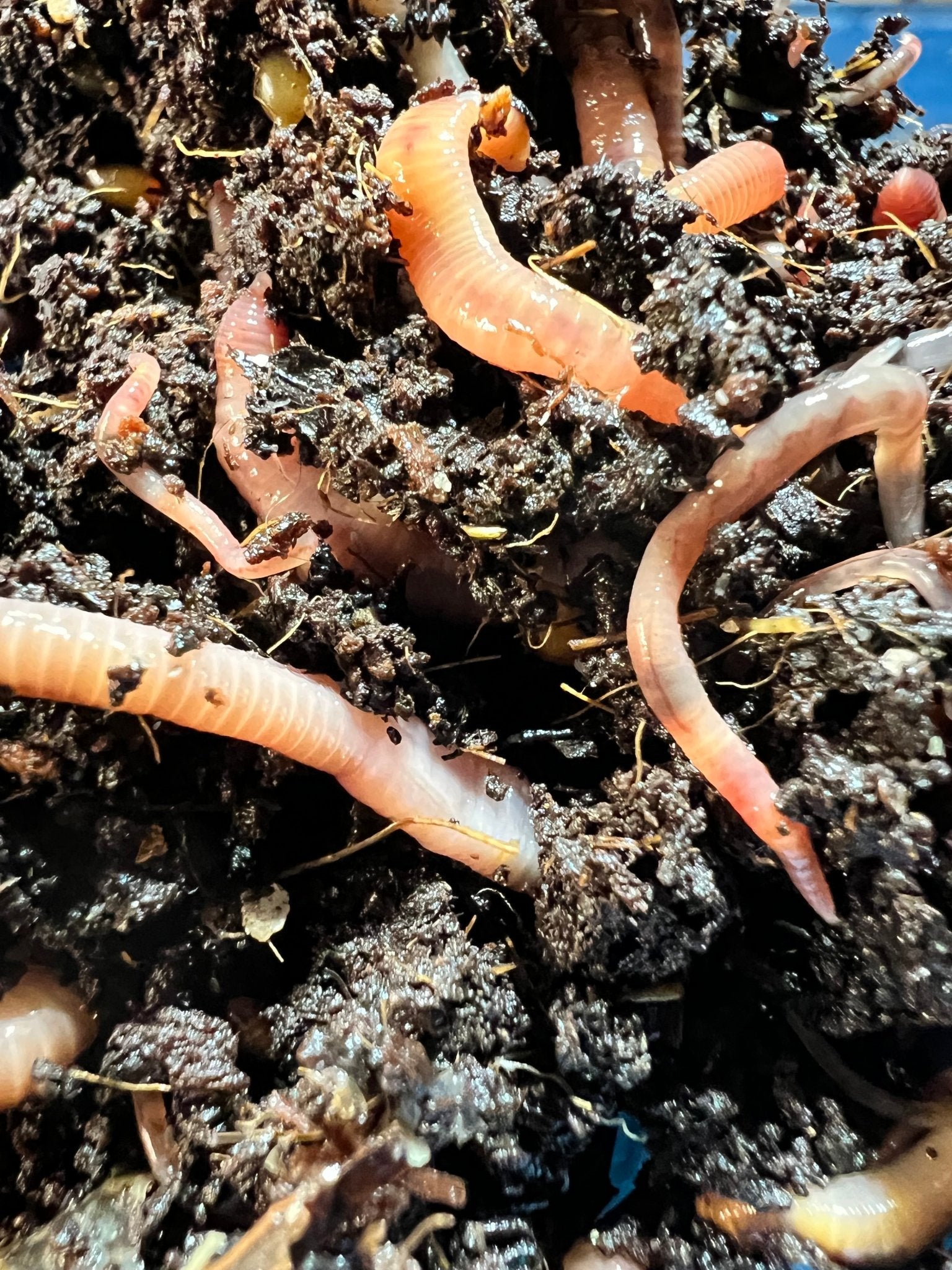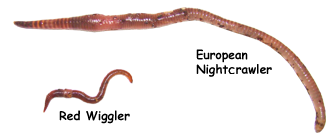Costs Top Quality Red Wiggler Worms - Boost Your Yard's Fertility
Costs Top Quality Red Wiggler Worms - Boost Your Yard's Fertility
Blog Article
Making Best Use Of the Advantages of Red Wiggler Worms: A Comprehensive Manual for Home Gardeners and Urban Farmers
In the world of lasting gardening methods, red wiggler worms stand as unrecognized heroes, silently changing natural waste right into nutrient-rich spreadings that can work wonders for soil health. By discovering the ins and outs of exactly how to effectively care for and make the most of the advantages of red wiggler worms, individuals can unlock a wide range of possibilities for enhancing the sustainability and efficiency of their gardening endeavors.
Comprehending Red Wiggler Worms
Red Wiggler worms, renowned for their reliable composting capacities, are a species of earthworms extensively utilized in vermiculture methods. These worms, clinically recognized as Eisenia fetida, prosper in rotting natural material, making them ideal candidates for composting (Red Wiggler Worms). Red Wigglers are voracious eaters, capable of consuming their very own weight in organic waste daily. Their gastrointestinal process breaks down natural matter right into nutrient-rich spreadings, which are an important resource for enhancing dirt and advertising plant development.
One secret characteristic of Red Wiggler worms is their reproductive price. These hermaphroditic creatures possess both male and female reproductive organs, permitting them to duplicate swiftly under favorable problems. A fully grown Red Wiggler can produce several offspring in a brief duration, guaranteeing a stable population within a composting system.

Establishing Up a Worm Container
When establishing a worm container for vermiculture objectives, proper preparation and interest to information are crucial for creating a favorable atmosphere for Red Wiggler worms,. Begin by picking an ideal container for your worm bin. This can be a plastic or wooden container with a cover to preserve wetness degrees and shield the worms from light. Guarantee that the bin has water drainage holes at the bottom to protect against waterlogging.

Place the worm container in a trendy, dark place away from straight sunlight and severe temperatures. Routinely monitor the wetness levels, including water if the bed linen really feels dry or half-cracked. Feed the worms a balanced diet of vegetables and fruit scraps, avoiding citrus fruits, onions, and spicy foods. By adhering to these steps, you can establish up a flourishing worm container that will effectively refine organic waste right into nutrient-rich vermicompost for your garden.
Feeding and Maintaining Worms
Making sure a nourishing and well balanced diet plan is critical for the health and efficiency of Red Wiggler worms in a vermiculture system. Red Wigglers are ravenous eaters, capable of consuming their very own body weight in raw material daily. To preserve a successful worm population, it is important to give them with a variety of food scraps such as fruit and vegetable peels, coffee premises, tea bags, and smashed eggshells. It is crucial to stay clear of feeding them citrus fruits, onions, garlic, milk items, meat, and oily foods as these can be harmful to the worms or cause unpleasant odors in the bin.
Appropriate moisture degrees are likewise crucial for the health of Red Wiggler worms. By carefully monitoring their diet regimen, wetness, and environmental problems, home gardeners and city farmers can sustain a healthy and efficient Red Wiggler worm population for composting objectives.
Gathering Worm Spreadings
To efficiently draw out nutrient-rich worm spreadings from the vermicompost, a methodical harvesting procedure is essential for making best use of the composting benefits. The very first action in harvesting worm castings is to urge the worms to migrate to one side of the bin.
After the spreadings have actually been harvested, it is essential to divide any staying worms from the spreadings to stay clear of harming them during storage space or application. One reliable method is to produce conical heaps of castings under brilliant light. Worms will intuitively relocate far from the light, permitting simple splitting up and elimination.
Last but not least, the collected worm castings need to be saved in an awesome, dark, and dry location to preserve their high quality and efficiency as a nutrient-rich dirt modification. By adhering to these actions, home garden enthusiasts and city farmers can make the most of the benefits of red wiggler worms in their vermicomposting systems.
Using Worm Castings in Gardening
The consolidation of nutrient-rich worm castings into garden soil can significantly enhance plant growth and total dirt wellness. Worm spreadings, likewise referred to as vermicast, are an all-natural fertilizer produced by red wiggler worms as they break down raw material. These spreadings are abundant in important nutrients like nitrogen, phosphorus, potassium, and useful microbes that promote plant development and boost dirt structure.
When utilizing worm spreadings in horticulture, it is necessary to blend them thoroughly into the dirt or utilize them as a top dressing around plants. The slow-release nature of worm spreadings makes sure a consistent supply of nutrients to plants in time, reducing the threat of nutrient leaching and advertising long-lasting dirt fertility. In addition, worm castings help boost soil aeration, water retention, and microbial task, Read Full Article producing a healthy Get More Info setting for plant roots to thrive.

Conclusion
In conclusion, the usage of red wiggler worms in home gardening and metropolitan farming can substantially benefit soil health and wellness and plant growth. By comprehending exactly how to set up and maintain a worm bin, feed the worms properly, and harvest their nutrient-rich castings, garden enthusiasts can maximize the advantages of these earthworms.
In the world of lasting gardening methods, red wiggler worms stand as unsung heroes, quietly changing natural waste right into nutrient-rich castings that can work wonders for dirt wellness.When developing a worm bin for vermiculture purposes, proper prep work and interest to detail are important for creating a conducive setting for Red Wiggler worms. The initial action in gathering worm castings is to encourage the worms to move to one side of the container. Worm spreadings, also known as vermicast, are an all-natural fertilizer produced by red wiggler worms as they damage down organic matter. By recognizing exactly how to set up and keep a worm bin, feed the worms properly, and collect this website their nutrient-rich castings, garden enthusiasts can take full advantage of the advantages of these earthworms.
Report this page